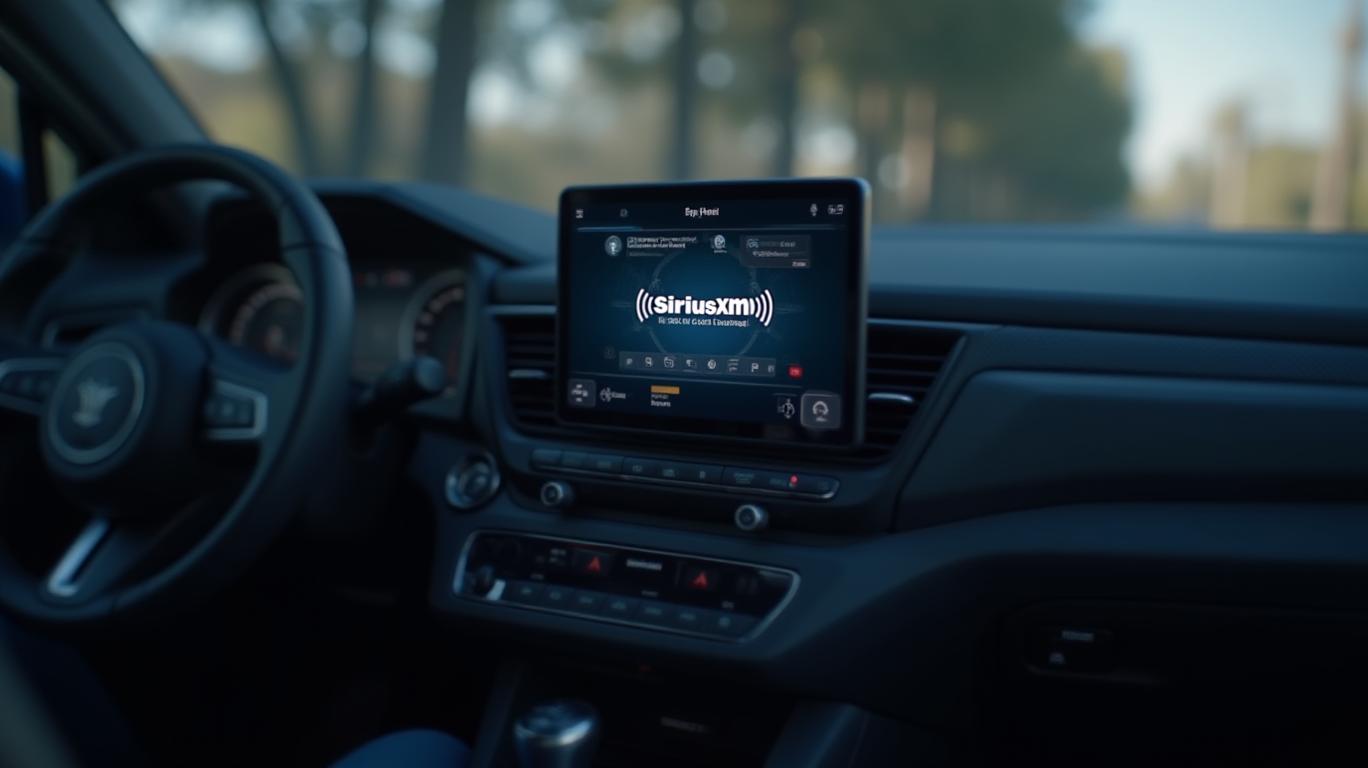SiriusXM’s Q1 Miss: Navigating Headwinds with Strategic Vision?

SiriusXM Holdings (NASDAQ: SIRI) reported its first-quarter 2025 results, revealing a miss on both earnings and revenue expectations. While the 12% EPS shortfall and 4% year-over-year revenue decline raised immediate concerns, the company’s reaffirmed full-year guidance and strategic initiatives suggest a focus on long-term resilience. Let’s dissect the numbers, assess the risks, and evaluate whether this is a temporary stumble or a sign of deeper challenges.
The Q1 Results: A Mixed Picture
SiriusXM’s Q1 2025 EPS of $0.59 fell short of the $0.67 consensus, while revenue totaled $2.07 billion, missing the $2.08 billion estimate by 0.48%. Year-over-year, revenue dropped 4% from $2.15 billion in Q1 2024, driven by declines in subscriber and equipment revenue. Net income slumped to $24 million, and free cash flow fell to $56 million, down from $88 million in Q1 2024.
Despite these misses, adjusted EBITDA held up at $629 million (3% lower than 2024), and SiriusXM maintained its $8.5 billion revenue and $2.6 billion adjusted EBITDA full-year targets. The stock edged up 0.37% premarket to $21.50, reflecting cautious optimism amid the miss.
What Drove the Decline?
- Macroeconomic Pressures: Soft advertising trends and reduced promotional pricing contributed to the revenue shortfall. The Pandora and off-platform segment saw a 2% YoY decline, with digital ad revenue hit by broader economic slowdowns.
- Subscriber Dynamics: While the average self-pay subscriber base shrank, SiriusXM highlighted improvements in churn (down 18 basis points to 1.6%) and narrowed self-pay net losses by 16%. The in-car subscription business remains resilient, but pricing increases have not yet translated to ARPU growth.
- Equipment Revenue: A 18% drop in equipment revenue stemmed from shifts in chipset costs and automaker production schedules, underscoring reliance on automotive partnerships.
Strategic Shifts to Watch
SiriusXM’s response to the miss includes several growth levers:
- Ad-Supported Subscription Tier: A new tier priced at a “high single-digit” rate aims to attract price-sensitive listeners while boosting ad revenue. With over 100 million cars on the road, this could expand its audience beyond its 8.19 million subscribers.
- Podcast Growth: Podcast revenue surged 33% YoY to nearly 1 billion downloads, a key bright spot. The company’s Creator Connect platform and AI-driven ad targeting are positioning it to capitalize on the podcast boom.
- Automotive Partnerships: A new deal with Mitsubishi to integrate SiriusXM’s 360L platform into vehicles signals expansion into connected car ecosystems, a critical growth area as automotive tech evolves.
Risks and Challenges
- Margin Pressures: Operating margins dipped to 18.7% in Q1 from 20.2% in 2024, and free cash flow margins fell to 2.7%, highlighting execution risks.
- Debt and Leverage: SiriusXM’s $14.5 billion debt load (as of Q1 2024) and high-interest costs remain a concern, though the company emphasizes cash flow stability.
- Competitive Landscape: Streaming giants like Spotify and podcast platforms like Spotify and Amazon Audible continue to encroach on SiriusXM’s traditional territory, while rising cancellation rates could strain subscriber retention.
Valuation and Investor Sentiment
- Dividend Stability: SiriusXM’s 5.04% dividend yield (sustained for a decade) provides a safety net, but its payout ratio of ~160% of free cash flow (based on 2024 data) raises sustainability questions.
- Analyst Outlook: Analysts’ price targets range from $16 to $30, with a consensus of $24.25. The stock’s YTD decline of 5% and a 37.4% annual EPS decline over five years suggest investor hesitation.
- Technical Signals: While short-term technicals hint at a “Buy,” long-term risks like stagnant revenue growth (1.5% over five years) and margin erosion temper enthusiasm.
Conclusion: A Strategic Pivot or a Losing Battle?
SiriusXM’s Q1 miss underscores the challenges of navigating a maturing satellite radio market and shifting consumer preferences. Yet, its reaffirmed guidance, podcast momentum, and cost-saving initiatives ($200 million annualized savings target) suggest a disciplined approach to weathering the storm.
The ad-supported tier and automotive partnerships could unlock new revenue streams, but success hinges on execution. If SiriusXM can stabilize margins, grow podcast monetization, and retain subscribers through price hikes, its $2.6 billion EBITDA target for 2025 is achievable.
However, with operating margins contracting and debt pressures looming, investors must weigh the company’s recurring revenue model against its high leverage and stagnant top-line growth. For now, SiriusXM appears to be a hold, but a rebound in ad spending and a successful ad-tier rollout could shift sentiment to bullish.
In a sector where the Broadcast Radio industry ranks in the top 11% of Zacks’ 250+ industries, SiriusXM has the scale and content to compete—but it must prove it can adapt faster than its legacy business declines.

Comments
No comments yet